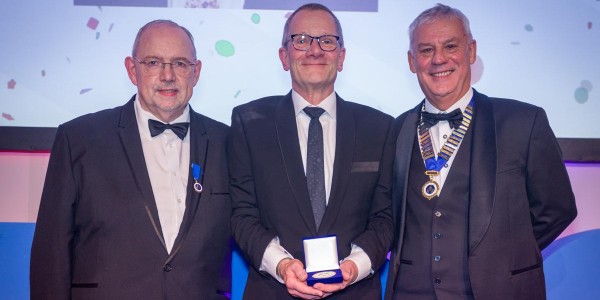Harnessing the power of data to improve efficiency and safety to transform the NHS.
When captured and used effectively, data has been proven to save thousands of lives and millions of pounds across the NHS, but it needs to be accurate and standardised to deliver the maximum benefits to staff and patients.
GS1 standards help the world's most dedicated people devote more time and resources to those who need them most by allowing them to track and trace every person, every product, and every place in real time.
This helps to improve traceability and visibility so that staff have access to the high-quality, accurate information they need, when they need it.
Scan4Safety
Scan4Safety was introduced in 2016 by The Rt. Hon Jeremy Hunt, former Secretary of State for Health and Social Care 2012-2018.
Led by The Department of Health and Social Care, the Scan4Safety programme was built on the adoption of GS1 standards to uniquely identify people, products and places at each touchpoint of a patient's care journey.
It is based on the real-time capture of information, at the point of care, by scanning a relevant GS1 barcode.
Non-recurrent inventory reductions of £9m across the six demonstrator sites
Recurrent inventory savings worth nearly £5m across the six trusts
Cumulative benefits of £3,194,346 realised within two years at Derby
140,000 hours of clinical time back to patient care
76% reduction in errors caused wrong patient, drug, dose and form
Product recall time reduced from 8.33 days to less than 35 minutes

Scan4Safety is a world first in healthcare – and a vital part of this government’s drive to make the NHS the safest and most transparent healthcare system in the world. Using simple barcodes that major industries rely on every day will help to transform standards of care – before, during and after patients have treatment, at the same time as freeing up resources for care by reducing waste."
The Rt. Hon Jeremy Hunt
Former Secretary of State for Health and Social Care 2012-2018, UK Government

In response to Baroness Cumberlege's Independent Medicines and Medical Devices Safety (IMMDS) Review, NHS England has launched a mandatory medical device outcome registry (MDOR).
To enable unique identifiers for high-risk medical devices to be captured for the registry, the government have since mandated the use of barcode scanning technology for hospitals in England.
Scan4Safety is now being implemented in several hospitals across England. National programmes have also launched in Scotland and Wales, with implementation projects planned in Northern Ireland.
Impact on staff and patients
In 2022/23, NHS England reported 384 Never Events.
Never Events are 'serious, largely preventable patient safety incidents that should not occur if healthcare providers have implemented existing national guidance or safety recommendations'.
By improving data capture and traceability, Scan4Safety helps to reduce incidences of some Never Events to reduce the risk of patient harm.

Artificial intelligence, robotics, GS1 data entry can free up the time of people like me – practicing doctors, nurses and pharmacists – to do what we’re trained to do. We’re not being paid to enter data into a system. We can spend time with people talking to them, hearing about their world."
Professor Sir Terence Stephenson
Nuffield professor of child health, University College Hospital
Benefits of GS1 standards in healthcare
Financial savings
Accurate procedure costings and improved stock control allowing for greater product visibility and budget control.
Improved patient safety
Accurate positive patient identification so the right patient is identified and verified before a patient encounter.
Greater traceability
Ability to trace medical devices, medications, assets and other products for inventory management and to the right patient.
Reduced clinical variation
Data is captured in a standardised format so comparisons can be made directly to reduce variation i.e. surgical procedure costs or patient outcomes.
Enhanced operational productivity
Information can be captured in real time through barcode scanning at the point of care or use, helping to speed up operational processes.
Improved patient outcomes
Improved data capture to allow for patient outcomes to be effectively monitored post procedure i.e. recovery times for procedures using particular equipment.
Accurate data
All data captured for people, products and places, is globally unique ensuring the information is right first time, every time.
More time released to care
Information is captured in near real time direct at the point of care. It can then be updated automatically in the patient record, reducing manual tasks for clinical teams.






